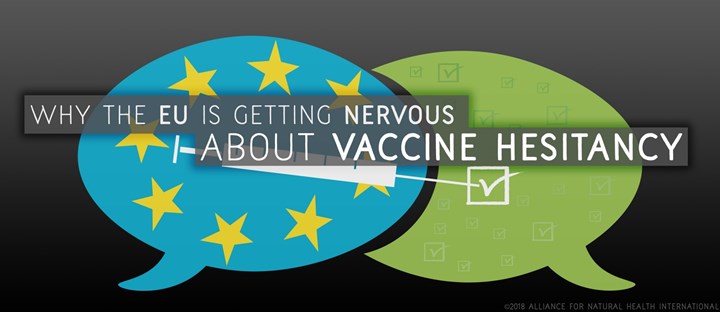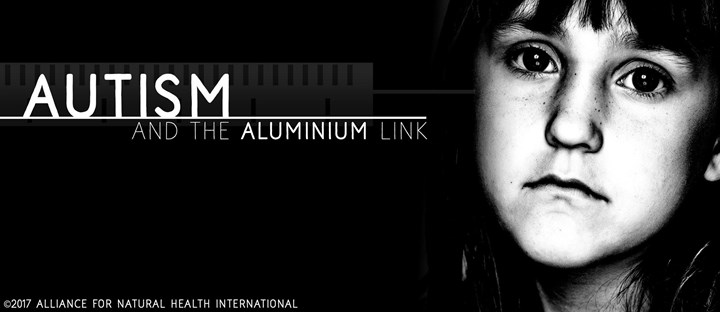Content Sections
Health authorities and the media are rolling out, as always in the northern hemisphere at this time of year, a strong case for getting the flu jab. We’re told it’s the best protection we can get against the flu that is expected to kill thousands this winter. But we’re only being told part of the story.
It’s therefore refreshing when you read reasonably balanced pieces about the seasonal flu and the vaccine, like the article published last Monday by the Irish Times.
When to comes to being open and transparent about vaccines, health authorities have a long way to go. Take Public Health England (PHE) for example, that publishes annual flu reports.
The 2016/17 report makes for interesting reading. Some highlights are as follows:
- Peak numbers of cases of confirmed flu infection occurred in the last 4 weeks of 2016 and the first 4 weeks of 2017
- Large numbers of cases occurred in institutions, especially care homes
But the report fails to connect two crucial pieces of information – what was the vaccination coverage for the elderly and vulnerable in care homes? This is a rather crucial piece of information, as it is seminal to determining effectiveness of the vaccine among this key group, whose immune systems are often heavily compromised by inadequate nutrition and low circulating vitamin D levels.
Contrary to what people are normally told, most studies suggest that vaccine effectiveness is around 50%, although in some years, such as 2014-15, it can be on average as low as 34%.
No one is suggesting that people in care homes, health workers or other vulnerable groups with high risk of infection should abstain from getting a flu jab. But that doesn’t mean everyone should have it regardless. And it also doesn’t mean that there aren’t other options available for those who choose to avoid vaccination.
Some of the reasons why people might not want the flu jab
- You are concerned about low effectiveness, that might be linked especially to genetic drift in the virus causing a mismatch between the virus strains in the vaccine and the circulating seasonal flu viruses
- You are concerned that regular, annual exposure to the vaccine might reduce its effectiveness, something that might be of particular concern in a year when a highly virulent strain of influenza were to circulate. A 2013 study published in Clinical Infectious Diseases showed lower effectiveness in individuals where vaccination had occurred in the current and previous season. The same study showed no protection conferred to members of the same household who had been vaccinated.
- You’re uncomfortable about the ingredients in vaccines, that may include attenuated (weakened) or killed viruses, formaldehyde, gelatin, chicken egg protein (when virus is not from cell culture), thimerosal and antibiotics. Vegetarians and vegans are often exposed to vaccines containing animal products without their knowledge. Children who receive the nasal vaccine are often not told that the vaccine is based on genetically modified organisms (GMOs)
- Evidence from studies of young children and the elderly, the two most vulnerable groups, show modest effectiveness at best. But what about if you look after your immune system by eating a healthy diet, supplementing with vitamin D (e.g. 4,000 IU/day) taking physical activity, engaging in mindfulness practices, etc. There are no studies comparing such vaccinated and unvaccinated populations, while there is a good body of clinical evidence showing that people with elevated vitamin D blood levels, consuming good quality diets and in a good state of health have ample immunological competence to deal with flu in the event they become infected. In fact, vitamin D experts argue that the seasonal incidence of flu infection may actually be linked to low vitamin D levels during the winter months.
- People are concerned about adverse reactions, especially in young children. Fever or febrile convulsion adverse events for trivalent vaccines can be unacceptably high. A 2015 study published in the Euro Surveillance journal suggested these adverse events occurred at a rate of some 5%-37% of children vaccinated with the inactivated trivalent flu vaccine.
Options to help protect you against the flu
- Vaccinate if none of the above is of concern to you. At ANH-Intl, we support vaccine choice and informed consent.
- Minimise risk of infection by using the best possible hygiene practices such as washing hands regularly, using tissues to cover your nose and mouth when you cough or sneeze and disposing tissues in a bin as soon as possible, keep surfaces such as keyboards, telephones and door handles clean and disinfected.
- Minimise your exposure to infected individuals. In some countries in the EU you can use the influenzanet data based on public input. The UK mapping data are particularly useful to gauge regional infection patterns. Data from the influenzanet project for the following EU countries are also available:
- Adults should ensure they take between 4,000 IU (100 mcg) and 10,000 IU (250 mcg) of vitamin D3 (cholecalciferol) daily during the winter months, with the aim of achieving a blood level of 100-150 nmol/L (40-60 ng/ml) 25-hydroxy vitamin D. A nutritional practitioner or doctor can assess your blood levels, or you can use test kits using a blood spot that are widely available (e.g. in UK via Cityassays or Better You).









Comments
your voice counts
04 October 2017 at 10:13 pm
I am actually quite angry at being asked at my local pharmacy (lloyds) wether i would like a flu jab there and then . I have never been asked this before and find it quite unnerving to say the least . When I told the till operative no and explained my reason as I had done my research and found they are not effective and could possibly do more harm than good there was complete silence . I find the health authorities are trying to push vaccines much more now according to how much fear they can instill in you . I like many people would rather boost my immune system than be a guinea pig for these so called helpful vaccinations .
05 October 2017 at 1:35 am
Did you forget Vitamin C there Doc? 3 gms of C with bioflavonoids plus organic geranium and organic selenium, (as in 2 Brazil nuts or tablespoon of peanuts), revs-up the killer white blood cells, leucocytes. Clark H R PhD ND.
I also have home-made nano-colloidal silver on hand. The slightest sniff, sneeze or itchy throat gets a single tablespoonful, held under the tongue for 5minutes, then washed down with a small glass of water. Use a colloidal silver generator*, aerate the process with a small aquarium pump, (the nasty CO2 does the magic), set PPM to MAX. It will need 6-7 hours for a liter. Keep it in a dark GLASS bottle in a cupboard away from electrics. Will yellow after a week but it's fine. (2 tablespoons a day knocks out herpes in a 5 days. Masses of NCS have reversed MS)!
* I use the Colloidal Master from US. Make sure voltage is correct. Check if your Govt has banned the import of the machine!!
18 October 2017 at 3:10 pm
yes love the use of all these good remedies Thomas , shame our NHS is not promoting these to GP Doctors , much energy and money would be saved..... but no....drugs rule their world and this a lot of bad money in that field , some drugs are necessary in this world but many are set to destroy health not help it .
05 October 2017 at 1:50 pm
At age 76 I have never had the flu vaccine and don't intend to. It contains vaccines for bird flu and swine flu but at the time these were prevalent I had close contact with some sufferers and did not catch these ailments. I haven't suffered from any type of flu since Oct. 1989 and believe this is because I take the precautions you mention above. During epidemics eg. bird & swine flu vaccines are brought out very quickly without extensive trials, as not to do so in an emergency is the lesser of 2 evils. But is this the case when the epidemic is past? Consider the care being taken with the jab for shingles prevention which has been available for years but is still not offered to the public at large.
06 October 2017 at 2:51 pm
I had the flu vaccine once against my bosses advice..he was the Controller
Of the hospital and said he knew what was in the vaccine and would never
Have it and advised me not to.
The nurses on the floor urged me to have the flu jab and I listened to them.
I was off work for twos weeks and was very ill....my boss said "I told you so"
and the nurses advised me never to have another flu jab.
This was in Berkeley,, California.
Now in York I am pressured every year to have one even though they know my
History.
I take Vit. D3 instead and I have never had the flu since.
17 November 2017 at 7:29 pm
My 13 year old daugher got POTS
In december 2016 We feel very stronge about it came from Hpv.
21 November 2017 at 8:18 am
Hello Sheri, thank you for sharing your experience. We hope you're getting support but if you do need any additional support please reach out the Association of HPV vaccine damaged daughters (https://www.facebook.com/AHVID.UK/) and Time for Action (https://www.facebook.com/TimeForActionOnHPVVaccines/). Both organisations are very active supporting families and children affected by HPV vaccine damage and campaigning for the damage caused by this vaccine to be recognised.
Warm Regards
Melissa
04 January 2018 at 6:05 pm
I understand that a magnesium deficiency is very common in most people in the developed world and that magnesium is necessary for vitamin D to be utilised by the body. Some experts maintain that the vitamin D deficiency that we are seeing is actually due to too little magnesium in the body but unfortunately the normal blood serum tests for magnesium don't actually detect a deficiency until it's serious as the blood levels are maintained by the body by taking magnesium stores from the bones and tissues.
I take magnesium and vitamin D3 and haven't had flu for decades. In fact, I can only remember having flu once in my 60 years and that was a very long time ago! I never had the flu vaccine when I worked in the health service but often saw my colleagues who had, dropping like flies after having had it.
Your voice counts
We welcome your comments and are very interested in your point of view, but we ask that you keep them relevant to the article, that they be civil and without commercial links. All comments are moderated prior to being published. We reserve the right to edit or not publish comments that we consider abusive or offensive.
There is extra content here from a third party provider. You will be unable to see this content unless you agree to allow Content Cookies. Cookie Preferences